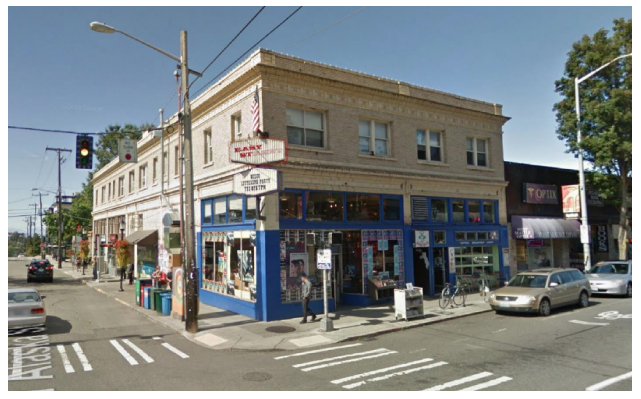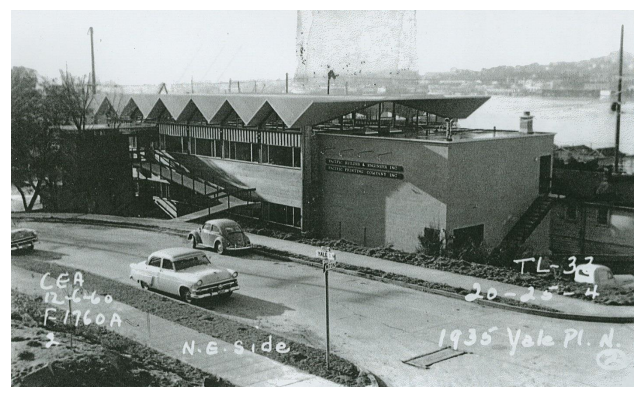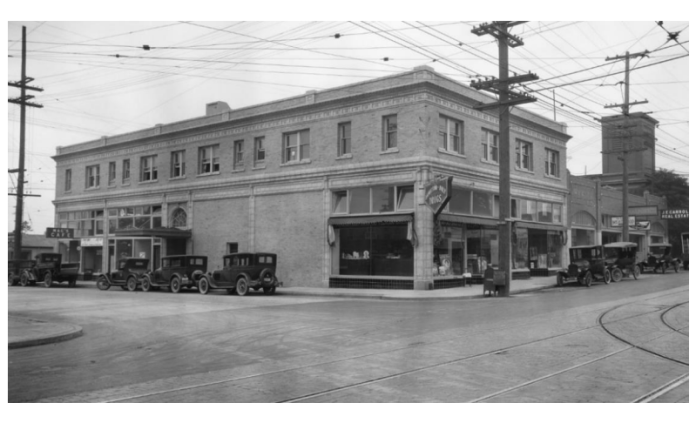On Monday, the Seattle City Council formally registered two new landmarks with preservation controls. In Eastlake, the old Pacific Architect and Builder Building represents a bygone era of early Modernism while in West Seattle the Crescent-Hamm Building is a finer specimen of craft masonry construction.
Crescent-Hamm Building
Located in the Junction, the Crescent-Hamm Building (4302 SW Alaska St) sits at the corner of SW Alaska St and California Ave SW. The building is formed primarily of terracotta brick with detailed reliefs, columns, and patterned third-story windows. In many ways, the building is reflective of older 20th century commercial buildings found throughout Seattle. Retail uses line both ground floor facades while residential apartments are located above.

The building was designed by Victor Voorhees and built in 1926. Another Voorhees building several blocks south was also recently landmarked. Preservation controls apply exclusively to the building exterior. In designating the building, the Landmarks Preservation Board cited reasons according to preservation standards:
C. It is associated in a significant way with a significant aspect of the cultural, political, or economic heritage of the community, City, State or nation.
D. It embodies the distinctive visible characteristics of an architectural style, or period, or a method of construction.
F. Because of its prominence of spatial location, contrasts of siting, age, or scale, it is an easily identifiable visual feature of its neighborhood or the City and contributes to the distinctive quality or identity of such neighborhood or the City.
Pacific Architect and Builder Building

Constructed during the revolutionary Modernist era, the Pacific Architect and Builder Building (1945 Yale Pl E) offers a much more austere architectural flavor. The building was originally commissioned in the late 1950s for a printing company, which partially explains the layout of the structure. The building uniquely sits atop the hillside with views to Lake Union and next to the recently constructed East Howe Steps. One of the most notable aspects of the structure is its peaked, rhythmic white roof contrasted with flat, dark walls below.
The building is three stories and serves as office space, which has recently been retrofitted. Designed by A.O. Bumgarder, the building was constructed in 1957. Preservation controls apply widely, including the site, building exterior, and the interior to protect the ceiling vaults. The Landmarks Preservation Board cited two primary reasons for designation:
D. It embodies the distinctive visible characteristics of an architectural style, or period, or a method of construction.
E. It is an outstanding work of a designer or builder.
Seattle Council Approves Arena MOU and Some Short-Term Rental Regulations
Stephen is a professional urban planner in Puget Sound with a passion for sustainable, livable, and diverse cities. He is especially interested in how policies, regulations, and programs can promote positive outcomes for communities. With stints in great cities like Bellingham and Cork, Stephen currently lives in Seattle. He primarily covers land use and transportation issues and has been with The Urbanist since 2014.


